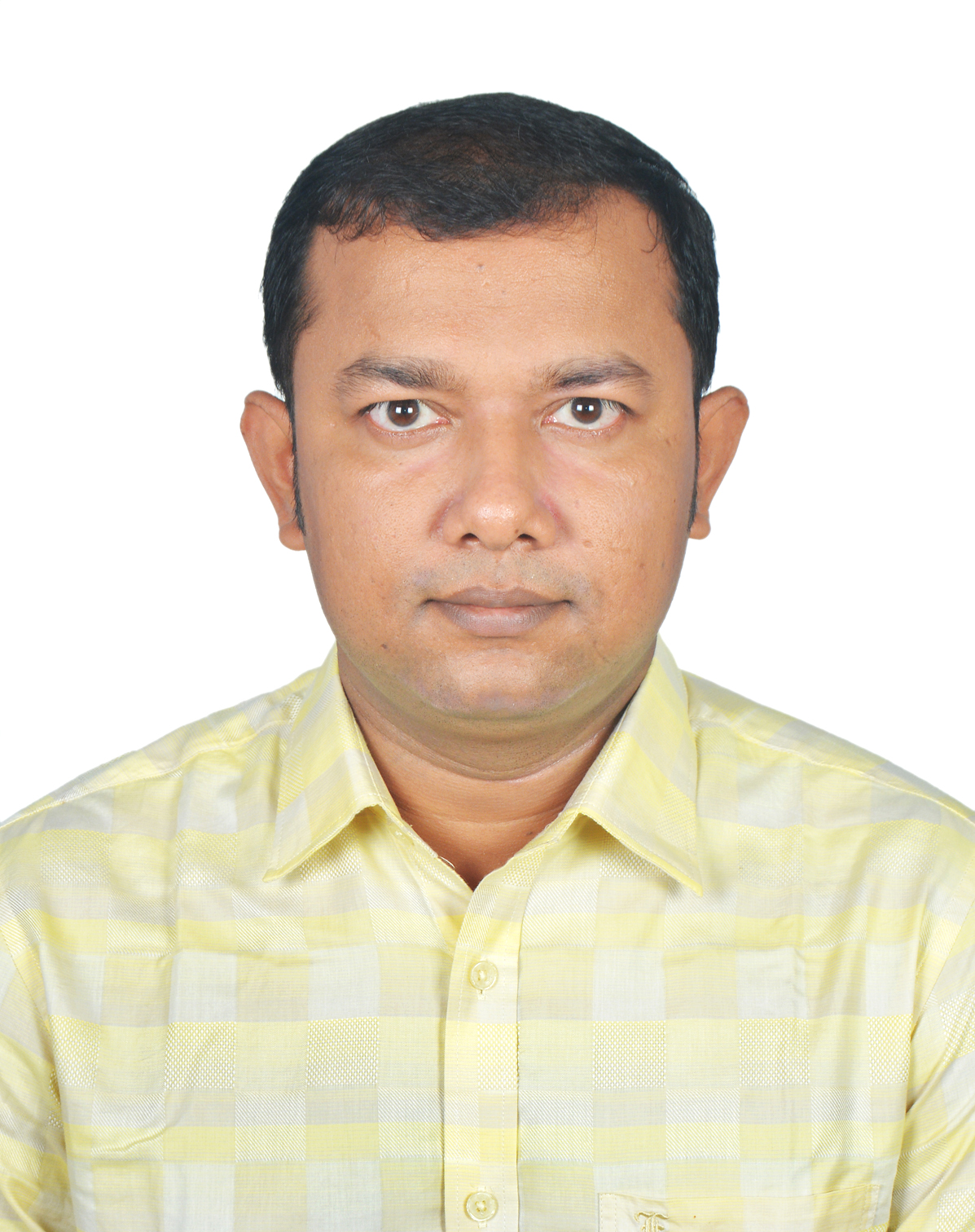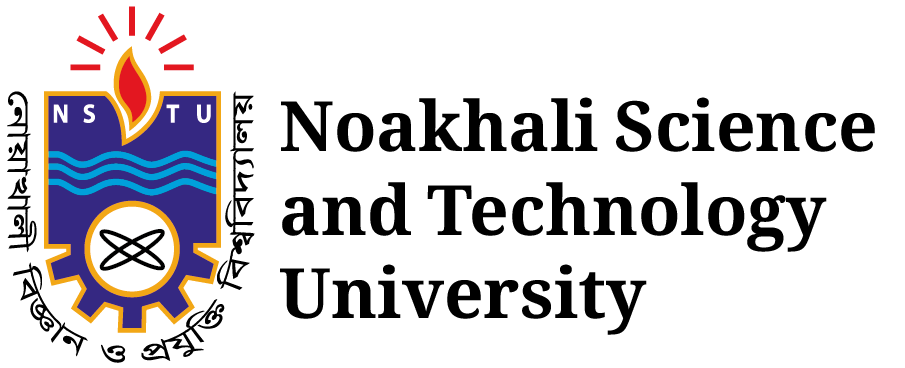Oceanography

EXTERNAL PROFILES
Assistant Professor
Razat Suvra Das
Razat Suvra Das is a faculty member in the Department of Oceanography at Noakhali Science and Technology University, Bangladesh. He holds an MS and BSc (Honours) in Marine Science from the University of Chittagong, graduating with top merit positions. His research focuses on microplastic pollution, sediment analysis, coastal processes and GIS based environmental mapping. He has led several research projects as Principal Investigator and published in peer-reviewed journals on topics such as microplastic contamination in aquatic systems, coastal sedimentology and climate related coastal dynamics.
Oceanography
BIOGRAPHY
RESEARCH INTERESTS
2015 - 2015
MS in Marine Science (Oceanography Branch)
Institute of Marine Sciences and Fisheries
University of Chittagong
2011 - 2014
BSc (Honours) in Marine Science
Institute of Marine Sciences and Fisheries
University of Chittagong
Last updated on 2025-06-18 16:00:13
No Job information...
No Project information...
No workshop information...
AWARDS AND ACHIEVEMENTS
No award information...
Unveiling Microplastics in Commercial Brackish Water Fishes from the Lower Meghna River Estuary of Bangladesh. Bulletin of Environmental Contamination and Toxicology
Authors: Das, R.S., Mahatab Uddin, S.M., Gündoğdu, S., Afrin, J.K., Jahan, N., Abedin, M.R.B., Chowdhury, S., Nahian, S.A., Mustafa, M.G., Siddique, M.A.M.Length-weight relationships and Fulton’s condition factor of two flatfishes Cynoglossus cynoglossus and Cynoglossus lingua from the Cox’s Bazar coast, Bay of Bengal
Authors: Siddique M.A.M., Das R.S., Akter F., Ahmed S., Islam N., Hossen M.Y., Tarek R.U.A., Mustafa M.G.Textural characteristics of surficial sediments along the Noakhali coast, Bangladesh: An implication for mineral placer deposits exploration
Authors: Rahman M., Das R.S., Khan M.S.I., Hossain M.I.S., Faruque M.E., Khan N.S., Siddique M.A.M.Mapping and GIS analysis of household ponds in the Halda river watershed
Authors: Das R.S., Chowdhury S.R., Hossain M.S., Shiuli M.K., Sarker S.Weather perturbations associated with the transit of tropical cyclones in the coast of Bangladesh
Authors: Das R.S., Chowdhury S.R., Shiuli M.K., Sarker S.Mapping and GIS analysis of small water reservoirs in the hills of the Halda river watershed
Authors: Sarker S., Das R.S., Chowdhury S.R., Hossain M.S. and Shiuli M.K.Assessment of soil salinity in the accreted and non-accreted land and its implication on the agricultural aspects of the Noakhali coastal region, Bangladesh
Authors: Das R.S., Rahman M., Sufian N.P., Rahman S.M.A., Siddique M.A.M.No Data Found
No Data Found
No Data Found
No Courses Found....
No Course Materials Found....
Taposh Kanti Dev
Graduated
Thesis Title: Assessment of Heavy Metal Contamination in Surface Water of the Matamuhuri River, Cox’s Bazar, Bangladesh
Overview: Heavy metal contamination in river water poses a significant environmental concern, particularly in developing countries like Bangladesh, due to industrial and agricultural pollution. Most research focuses on rivers contaminated by industrial effluents; however, little is known about rivers in less industrialized regions such as the Matamuhuri, which are vital for local communities and important ecosystems. This study evaluates surface water pollution in the Matamuhuri River by measuring concentrations of five heavy metals, Fe, Cu, Cr⁶⁺, Zn and Pb, from upstream to the estuary. Water samples analyzed using UV-Vis colorimetric methods showed that iron (Fe) had the highest concentrations, particularly in the downstream region, with a mean value of 1.47 mg/L, which is 4.9 times greater than the WHO permissible limit. Strong positive correlations were observed between Fe and copper (Cu) (r = 0.82, p < 0.05) as well as between Fe and zinc (Zn) (r = 0.80, p < 0.05). In contrast, the mean concentrations of Cu, Zn, Cr⁶⁺ and Pb did not exceed any of the standard limits set by WHO, DoE, BIS or USEPA. Chromium (Cr⁶⁺) exceeded safety thresholds at several downstream sites, particularly near farming discharges and vulnerable riverbanks. Lead (Pb) levels were generally low, though some sites near tobacco farms showed exceedances. Overall mean concentration followed the order Fe > Cu > Zn > Cr⁶⁺ > Pb. Hierarchical clustering analysis identified distinct station groupings based on contamination patterns, with sites affected by agriculture and urbanization clustering together. Pollution indices such as HPI, MI, and PERI revealed that downstream areas experienced moderate to severe contamination, with the highest HPI value recorded at 181.9. The study highlights the urgent need for continuous monitoring and stricter pollution control measures in rural rivers like the Matamuhuri, which are increasingly impacted by intensive agriculture, urban expansion and other human activities.
Mahmudul Hasan Akanda Rony
Graduated
Thesis Title: Assessment of Heavy Metal Contamination in Surface Water of the Chalan Beel Wetland Ecosystem
Overview: Heavy metal contamination in water poses a serious concern for the wetlands of Bangladesh. This study evaluates the surface water quality of the Chalan Beel wetland, with a particular focus on heavy metal pollution levels. An indexing approach was used to identify the level of contamination at the sampling sites and to evaluate associated pollution threats. Water samples were collected 15–20 cm below the surface, and metal concentrations were measured using colorimetric spectrophotometry (DR-3900). The concentrations of Fe (0.23–5.22 mg/L) and Cr (0.01–0.144 mg/L) exceeded the acceptable limits established by the World Health Organization (WHO) and the Bangladesh standard. However, Cu (0.03–0.95 mg/L), Zn (0.12–1.14 mg/L), and Pb (0.002–0.005 mg/L) were within acceptable limits across all locations analyzed. The results demonstrated that the mean concentrations of heavy metals followed the order: Fe > Zn > Cu > Cr > Pb. The heavy metal pollution index (HPI) for the study area was 125.6, which exceeds the critical pollution index value of 100. Similarly, the heavy metal evaluation index (HEI) was recorded at 21.4, surpassing the threshold value of 20. Moreover, the interpolation map of Chalan Beel, based on HPI and HEI, indicates pollution levels ranging from low to high using color gradients. Additionally, the Nemerow pollution index (NI) for the study area was highest at 12.7, exceeding the pollution threshold (>3). These findings indicate that the area is significantly contaminated with heavy metals. Furthermore, multivariate analyses, including HCA and CM, reveal that heavy metal contamination arises from common anthropogenic sources such as agricultural runoff, farming waste, industrial wastewater and untreated household effluents observed at the sampling sites. The current levels of heavy metals in the Chalan Beel water raise environmental and health concerns, requiring attention and a comprehensive assessment of contamination, including its sediments, soil and biota.
Ifta Khirul Abadin Tanim
Graduated
Thesis Title: Assessment of Microplastic Contamination in Surface Water and Sediments of the Chalan Beel Wetland Ecosystem
Overview: Enter Project/Thesis Overview
Md Samiul Islam
Graduated
Thesis Title: Assessment of Heavy Metal Contamination in the Water of Aquaculture Ponds in Feni District, Bangladesh
Overview: Enter Project/Thesis Overview
Fateha Begum
Graduated
Thesis Title: A Systematic Review of Heavy Metal Accumulation in Edible Aquatic Organisms from South and Southeast Asia
Overview: Enter Project/Thesis Overview
Iffait Ara Nasrin
Graduated
Thesis Title: Microplastic Pollution in Developed and Developing Countries: A Systematic Review
Overview: Enter Project/Thesis Overview
- Institutional Email: razat.ocn@nstu.edu.bd
- Personal Email: razatsuvra@gmail.com
- Mobile number: 01923467639
- Emergency Contact: 01685514254
- PABX: 1377
- Website: N/A
SOCIAL PROFILES
Department
Oceanography
Noakhali Science and Technology University


